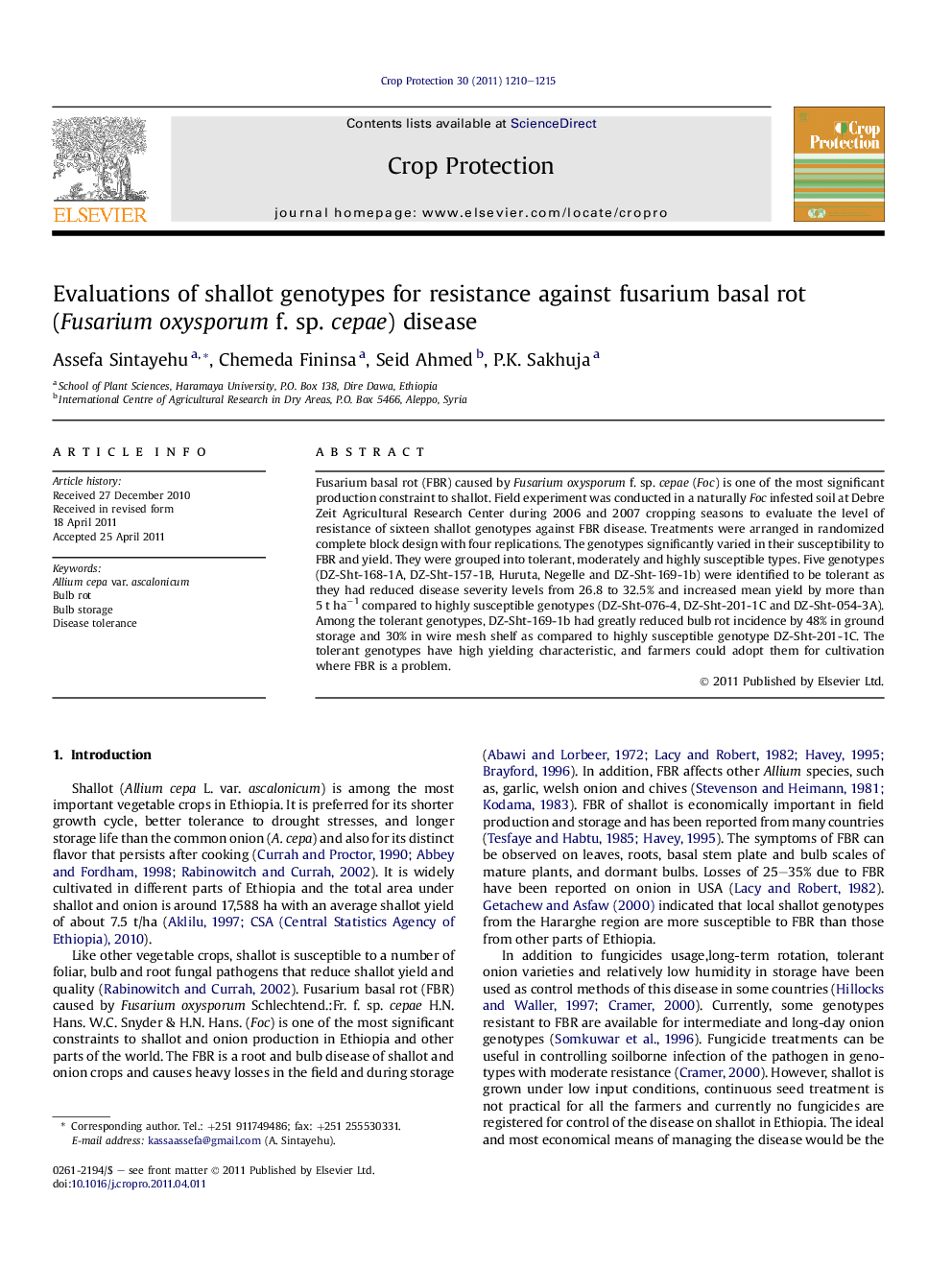| Article ID | Journal | Published Year | Pages | File Type |
|---|---|---|---|---|
| 4506628 | Crop Protection | 2011 | 6 Pages |
Fusarium basal rot (FBR) caused by Fusarium oxysporum f. sp. cepae (Foc) is one of the most significant production constraint to shallot. Field experiment was conducted in a naturally Foc infested soil at Debre Zeit Agricultural Research Center during 2006 and 2007 cropping seasons to evaluate the level of resistance of sixteen shallot genotypes against FBR disease. Treatments were arranged in randomized complete block design with four replications. The genotypes significantly varied in their susceptibility to FBR and yield. They were grouped into tolerant, moderately and highly susceptible types. Five genotypes (DZ-Sht-168-1A, DZ-Sht-157-1B, Huruta, Negelle and DZ-Sht-169-1b) were identified to be tolerant as they had reduced disease severity levels from 26.8 to 32.5% and increased mean yield by more than 5 t ha−1 compared to highly susceptible genotypes (DZ-Sht-076-4, DZ-Sht-201-1C and DZ-Sht-054-3A). Among the tolerant genotypes, DZ-Sht-169-1b had greatly reduced bulb rot incidence by 48% in ground storage and 30% in wire mesh shelf as compared to highly susceptible genotype DZ-Sht-201-1C. The tolerant genotypes have high yielding characteristic, and farmers could adopt them for cultivation where FBR is a problem.
► Fusarium basal rot disease is most significant constraint to shallot production. ► The promising genotype DZ-Sht-168-1A reduced disease severity by 32.5%. ► Tolerant genotypes increased yield by 5 t ha−1 compared to highly susceptible. ► Tolerant genotypes in ground & wire mesh storage reduced bulb rot by 48% & 30%.
